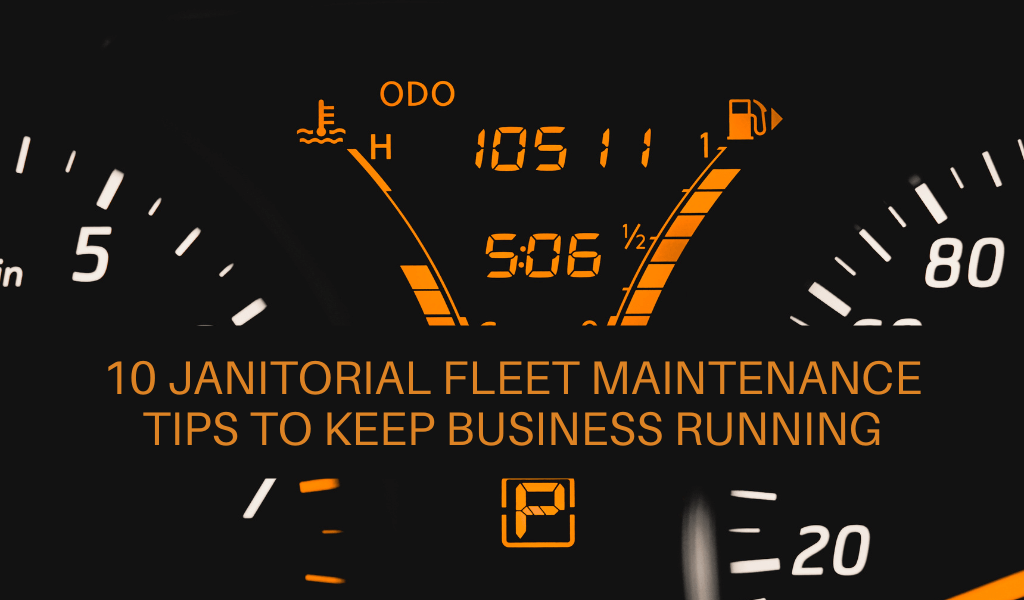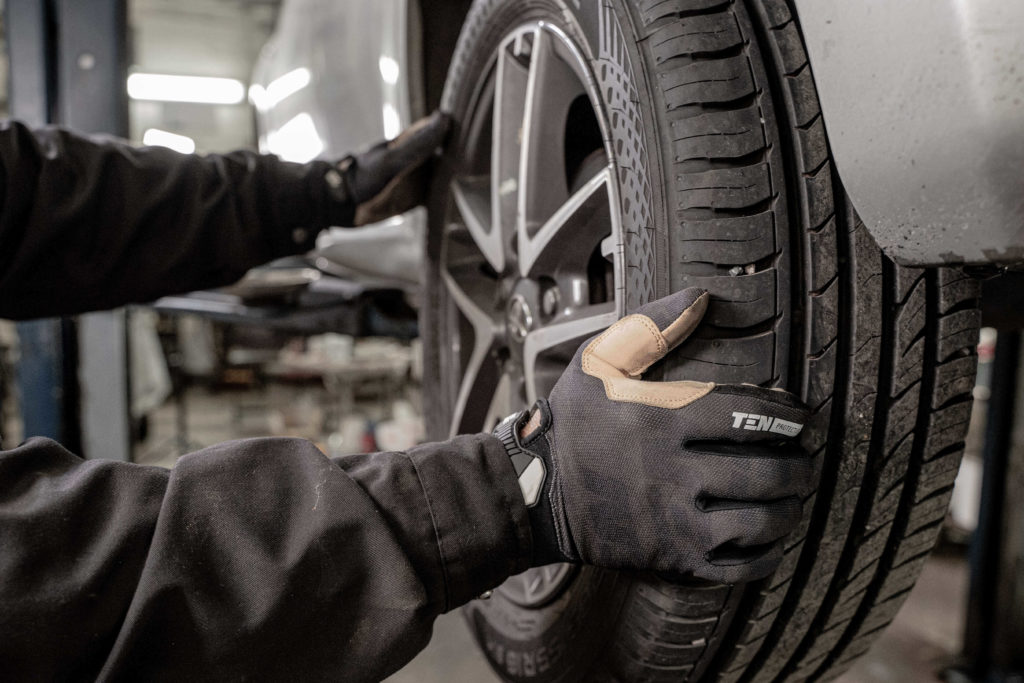Don’t let unexpected breakdowns soil your schedule. Follow these fleet maintenance tips to keep your cleaning business running smoothly.
For many commercial cleaning companies, fleet vehicles are just as essential as mop buckets or floor buffers. Without these vehicles, your teams can’t easily get to the scheduled clients, and it’s much more difficult to transport supplies. But following a few fleet maintenance tips can help keep your vehicles in top shape.
Some of these you can do yourself with just a little mechanical know-how, and others you may need to have done at a shop. In either case, remember that equipment maintenance is an investment in your company. Just like well-maintained janitorial equipment is more reliable and longer-lasting, fleet vehicles will also perform better and run longer when you take good care of them. Not only that, but it can save you money.
When you take care of your vehicles, you don’t run into the same unexpected repair costs. Expensive parts last longer, and you save yourself the headache of trying to organize transportation for your teams when your vehicle strands them on the side of the road.
Harness the power of Janitorial Manager to streamline your inspection process and boost client retention rates. Schedule a free discovery call and learn how janitorial software can help you put an end to client turnover.
10 Fleet maintenance tips that will help your commercial cleaning business drive toward success
1. Create a Schedule and Checklist. One of the best fleet maintenance tips around is to create a plan for your vehicles, just like you do with your other janitorial equipment. You can look up the recommended maintenance schedule for most vehicles online, so that’s an excellent place to begin. It’s unlikely you’ll have the same schedule for each vehicle, as they probably have different ages/mileage or might even be different makes. In fact, many of the following tips are somewhat dependent on how often a vehicle is driven, the distance driven, traffic and road conditions, and even weather.
2. Check Tire Pressure. Under or over-inflated tires reduce gas mileage, impact traction and control, and reduce the life of the tire. You can usually find the correct psi (pounds per square inch) for your vehicle on a sticker on the driver’s side door frame. Ideally, check the tire pressure each week before taking the vehicle out for the day. And don’t forget to check the spare tire, too!
3. Check Tire Tread. Tire tread depends so much on mileage, the type of tires you have, road conditions, and other factors that it’s hard to offer any timeframe for this. However, it only takes a second, and you can do it at the same time you’re checking tire pressure, so bundle the two of these together, and you’ll be sure to notice when your tires are getting close to needing to be replaced.
4. Examine Windshield For Chips. A small chip in a windshield is easy and inexpensive to repair. Left unresolved, however, a small chip can quickly turn into a large crack that will require a new windshield.
5. Check Engine Oil. Anywhere from weekly to monthly, open up the hood and check the engine oil level. While some new vehicles may have automated sensors, most vehicles have a dipstick with a pronounced handle. With the engine cool and a rag or towel in your other hand, pull the dipstick out and look near the bottom for the indicator guide. This may be as subtle as two lines or as obvious as the words MIN and MAX. If the dipstick has oil at the higher mark, you’re fine. If it’s at or below the low mark, you need to add a quart to bring it into the proper range.
6. Change Engine Oil. This is one of the fleet maintenance tips that you may need to head to a mechanic for. Remember that any expense here is an investment in the life of your vehicles. Follow the manufacturer’s recommendation here, as your vehicle may need an oil change every 5,000 miles or up to 15,000 miles. Whatever it is, fresh oil keeps your engine running smoothly and helps prevent wear and tear.
7. Check Brakes. The perfect time to check a vehicle’s brakes is while you’re getting an oil change. Like many other fleet maintenance tips, catching and correcting problems early can prevent much more expensive repairs down the road.
8. Keep Your Vehicle Clean. First, you’re running a commercial cleaning company, so what kind of impression will a filthy vehicle give to your clients? More than that, however, is that a clean vehicle makes it easier to spot issues like window damage, spots of rust, or leaks.
9. Look For a Service Discount. If you have several vehicles, one of the fleet maintenance tips that may save you some cash is to find a shop that would be willing to give you a volume discount for work like changing the oil or brake pads and other basic upkeep.
10. Check Fluid Levels. In addition to oil, you can also pretty easily check your coolant, brake fluid, windshield washer fluid, power steering fluid, and transmission fluid. In most cases, the windshield washer fluid will run low long before anything else, but it only takes another couple of minutes to check everything while you’re already under the hood.
In truth, there are so many janitorial fleet maintenance tips we could offer. Many of them should be included in your regularly scheduled tune-ups, such as tire rotation, checking for any frayed or loose belts and hoses, and checking that all your lights are working correctly. That said, the ten here should keep your vehicles in good condition and alert you to any wear and tear issues that may develop.
Take your cleaning business to the next level. Schedule a free call with Janitorial Manager to see how our software can make your janitorial operation more profitable without adding stress.


